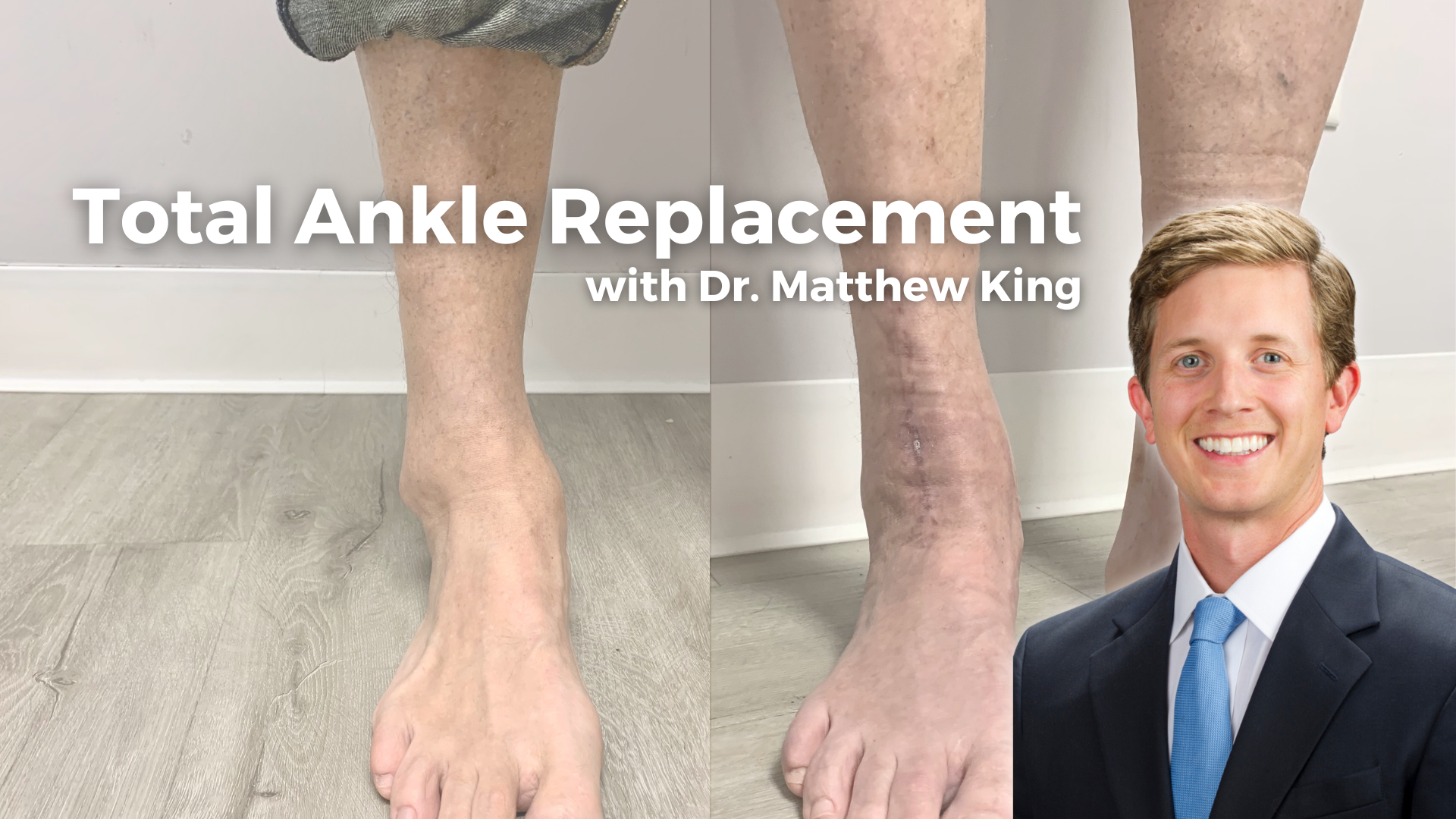Table of Contents
Introduction
The Ankle: A Vital Yet Vulnerable Joint
The ankle is one of the most crucial joints in our body, bearing the weight of our entire frame and facilitating movement. However, like all parts of the body, it’s susceptible to wear and tear, injuries, and various medical conditions. When these issues become severe, they can significantly impact our quality of life, making everyday tasks challenging and painful.
Why Surgical Intervention?
For many, conservative treatments such as physical therapy, medications, or braces might offer relief. But when these methods fail to provide adequate relief, or when the ankle joint is severely damaged, surgical intervention becomes a necessity.
Understanding the Need
Surgery isn’t just about alleviating pain; it’s about restoring function, mobility, and overall quality of life. A damaged ankle can hinder everything from walking to participating in recreational activities. Thus, the decision to undergo surgery is often a step towards reclaiming an active and pain-free life.
Podiatrists: The Ankle Experts
When considering ankle surgery, the expertise of the surgeon is paramount. Podiatrists, with their specialized training focused solely on the foot and ankle, are the experts in this field. They possess a deep understanding of the intricate anatomy of the ankle and the latest surgical techniques, ensuring patients receive the best care possible.

Why Trust a Podiatrist?
Podiatrists spend years mastering the complexities of the foot and ankle. Their expertise isn’t just theoretical; it’s honed through countless hours of hands-on experience, treating a wide range of ankle conditions. When you trust a podiatrist with your ankle surgery, you’re placing your trust in a specialist dedicated to this specific area of medicine.
What is Total Ankle Replacement (Ankle Arthroplasty)?
Defining Ankle Arthroplasty
 Total Ankle Replacement, commonly referred to as ankle arthroplasty, is a surgical procedure designed to replace a damaged ankle joint with artificial components. Much like hip or knee replacements, this procedure aims to alleviate pain and restore function to a joint that has been compromised due to injury, arthritis, or other medical conditions.
Total Ankle Replacement, commonly referred to as ankle arthroplasty, is a surgical procedure designed to replace a damaged ankle joint with artificial components. Much like hip or knee replacements, this procedure aims to alleviate pain and restore function to a joint that has been compromised due to injury, arthritis, or other medical conditions.
The Anatomy of the Ankle
The ankle joint is a complex structure formed by the meeting of three bones: the tibia (shinbone), the fibula (the smaller bone of the lower leg), and the talus (a foot bone). Over time, the cartilage that cushions these bones can wear down or become damaged, leading to pain and reduced mobility.
The Shift in Preference
Historically, when conservative treatments failed to alleviate ankle pain or improve function, a procedure called ankle arthrodesis, or ankle fusion, was the go-to solution. This method involves fusing the bones of the ankle joint together, which can alleviate pain but also limits the joint’s range of motion.
However, as medical technology and surgical techniques have advanced, ankle arthroplasty has emerged as a preferred alternative for many patients and surgeons. The procedure offers several advantages over fusion, most notably the preservation (and often restoration) of natural ankle movement.
Benefits of Ankle Arthroplasty
 Restored Mobility: Unlike fusion, which can restrict movement, ankle arthroplasty aims to allow patients to move their ankle more naturally.
Restored Mobility: Unlike fusion, which can restrict movement, ankle arthroplasty aims to allow patients to move their ankle more naturally.- Pain Relief: By replacing the damaged parts of the ankle with prosthetic components, many patients experience significant pain reduction.
- Improved Quality of Life: With reduced pain and increased mobility, patients often find they can return to activities they love, from daily walks to more strenuous physical activities.
Podiatrists at the Forefront
As experts in foot and ankle care, podiatrists have been instrumental in the evolution and refinement of ankle arthroplasty. Their deep understanding of the ankle’s anatomy, combined with expertise in the latest surgical techniques, ensures that patients receive the most advanced care available. When considering ankle arthroplasty, a podiatrist’s specialized knowledge makes them the ideal choice for this transformative procedure.
The Evolution of Ankle Replacement
From Humble Beginnings
The journey of ankle replacement surgery is a testament to the relentless pursuit of medical advancement. Beginning in the early 1970s, the medical community recognized the limitations of ankle arthrodesis and sought better solutions for patients.
The 1970s: Pioneering Efforts
During this decade, inspired by the success of arthroplasty in other joints like the hip and knee, the first designs for ankle prostheses emerged. These initial designs, while groundbreaking, had their share of challenges, leading to mixed results in long-term follow-up studies.
Challenges and Learnings
The early prosthetic designs, though innovative, revealed the unique challenges of replicating the ankle’s complex biomechanics. Some of the pioneering designs didn’t stand the test of time, leading to complications and the need for revisions. As a result, for a period, ankle arthrodesis remained the preferred surgical treatment.
Modern Designs: A Renaissance in Ankle Arthroplasty
However, setbacks didn’t deter the medical community. Drawing insights from earlier challenges, newer prosthetic designs began to emerge. These modern designs, more in tune with the ankle’s natural movement, showed promising results, reigniting interest in ankle arthroplasty.
One significant advancement was the introduction of three-component designs. These designs featured a polyethylene meniscal bearing placed between two metal bone-anchored components, allowing for better congruence at the articular surfaces in all joint positions. This innovation aimed to minimize wear and deformation of the components, addressing some of the earlier designs’ shortcomings.
Podiatrists: Leading the Charge
Throughout this evolution, podiatrists have been at the forefront, championing advancements and refining techniques. Their specialized training and focus on the foot and ankle made them uniquely positioned to contribute to the field’s growth. By combining their deep anatomical knowledge with the latest in surgical innovation, podiatrists have played a pivotal role in making ankle arthroplasty the successful procedure it is today.
Key Features of Modern Prosthetic Design
Understanding the Ankle’s Complexity The ankle is not just a hinge joint; it’s a marvel of biomechanical engineering. To replicate its function artificially requires a deep understanding of its anatomy, movement dynamics, and the stresses it endures. Modern prosthetic designs for ankle replacement have been crafted with these complexities in mind.
Objectives Driving Prosthetic Design
The primary goals when designing prosthetics for ankle joint replacements include:
- Replicating Original Joint Function: The prosthetic should mimic the natural movement of the ankle, ensuring smooth and pain-free motion.
- Ensuring Component Fixation: A successful replacement requires the prosthetic components to be securely fixed, ensuring they remain in place and function effectively over time.
- Longevity of the Implant: Given the stresses the ankle endures, the implant must be durable, resisting wear and tear to serve the patient for years.
- Feasibility of Implantation: Given the ankle’s relatively small size compared to other joints, the design must be compact yet effective, allowing for successful implantation and function.

The Balance: Mobility vs. Congruency
One of the central challenges in ankle prosthetic design is striking the right balance between mobility and congruency.
Unconstrained vs. Constrained Designs
- Unconstrained Designs: These allow for necessary mobility but might have incongruent contact. While they offer more natural movement, they can give rise to larger contact stresses, potentially leading to higher wear rates.
- Constrained Designs: These designs prioritize congruency, producing large contact areas with low contact stresses. However, they can transmit undesirable constraint forces, which might overload the fixation system at the bone-component interface.
Podiatrists: Merging Theory with Practice
Podiatrists, with their hands-on experience and theoretical knowledge, have been instrumental in refining prosthetic designs. They understand the practical challenges patients face and work closely with design engineers to ensure prosthetics are not only theoretically sound but also offer real-world benefits. Their insights have been invaluable in the iterative process of design improvement, ensuring that modern ankle replacements are more effective and reliable than ever before.
When is Ankle Replacement Recommended?
Understanding the Need
Total Ankle Replacement is a significant surgical procedure, and as with all surgeries, it’s essential to determine when it’s the right course of action. While the decision ultimately rests with the patient and their healthcare provider, certain conditions and situations make this procedure a viable option.
Primary Indications
The following are the primary situations where ankle arthroplasty might be recommended:
- Primary or Posttraumatic Osteoarthritis: This is a degenerative joint disease where the cartilage that cushions the ends of bones in the joint deteriorates over time. When the wear is significant and conservative treatments are ineffective, ankle replacement becomes a consideration.
- Severe Ankle Rheumatoid Arthritis: Rheumatoid arthritis is an autoimmune disease that can cause joint damage and pain. When the ankle joint is severely affected, and there isn’t significant osteoporosis of the ankle, replacement might be the best option.
- Previous Arthrodesis Rejection: Some patients who are suitable candidates for ankle fusion (arthrodesis) might reject it due to concerns about limited mobility. For them, ankle replacement offers an alternative that preserves joint movement.
Assessing the Patient’s Lifestyle
Beyond the medical indications, a patient’s lifestyle and functional demands play a crucial role in the decision-making process.
Low Functional Demand
Patients with a relatively sedentary lifestyle or those who don’t engage in high-impact activities are often better candidates for ankle replacement. The prosthetic joint, while durable, might not withstand the stresses of high-impact sports or heavy manual labor over the long term.
Podiatrists: Guiding the Decision
Podiatrists, with their specialized training and comprehensive understanding of foot and ankle conditions, are ideally positioned to guide patients through this decision. They assess the patient’s medical history, current condition, lifestyle, and future goals to provide a recommendation tailored to the individual’s unique situation. Their expertise ensures that patients are well-informed and confident in their choice, whether it’s ankle replacement or another treatment option.
Why Choose a Podiatrist for Your Ankle Replacement?
Specialized Training and Expertise
When it comes to medical procedures, especially surgeries, the expertise of the practitioner is paramount. Podiatrists undergo rigorous training focused solely on the foot and ankle, making them uniquely qualified to handle complex ankle conditions and surgeries.
Deep Anatomical Knowledge
The foot and ankle are intricate structures, comprising numerous bones, ligaments, tendons, and muscles. A podiatrist’s deep understanding of this anatomy, combined with their surgical skills, ensures precision and accuracy during the procedure.
Staying Abreast of Advancements
The field of medicine is ever-evolving, with new techniques, tools, and knowledge emerging regularly. Podiatrists are committed to continuous learning, ensuring they are up-to-date with the latest advancements in ankle arthroplasty. This dedication translates to better outcomes and care for their patients.
Hands-on Experience
Beyond theoretical knowledge, podiatrists accumulate vast hands-on experience over the years. They encounter a wide range of ankle conditions, from the common to the rare, allowing them to develop a keen sense of diagnosis and treatment.
Personalized Care
Every patient is unique, with their own set of challenges, needs, and goals. Podiatrists understand this and offer personalized care tailored to each individual. From the initial consultation to post-operative care, they ensure that patients are well-informed, comfortable, and confident in their treatment journey.
Testimonials and Success Stories
The true testament to a podiatrist’s expertise lies in the stories of their patients. Many who have undergone ankle replacement under the care of a podiatrist share glowing testimonials. They speak of reduced pain, restored mobility, and a significantly improved quality of life.
Conclusion: Trust in Specialized Care
While there are various medical professionals who might offer ankle treatments, choosing a specialist ensures the highest level of care. Podiatrists, with their focused training and dedication to the foot and ankle, are the ideal choice for anyone considering ankle replacement. Their expertise guarantees that patients are in the best hands, maximizing the chances of a successful and transformative procedure.
Conclusion
Reiterating the Importance of Expert Care
 The journey through understanding Total Ankle Replacement has underscored one fundamental truth: the importance of seeking expert care. The ankle, while small, plays a pivotal role in our mobility and overall quality of life. Ensuring it receives the best possible care is not just a medical decision; it’s a commitment to one’s well-being.
The journey through understanding Total Ankle Replacement has underscored one fundamental truth: the importance of seeking expert care. The ankle, while small, plays a pivotal role in our mobility and overall quality of life. Ensuring it receives the best possible care is not just a medical decision; it’s a commitment to one’s well-being.
Podiatrists: The Gold Standard in Ankle Care
Throughout this exploration, the role of podiatrists has been a recurring theme. Their specialized training, deep anatomical knowledge, and commitment to staying updated with the latest advancements make them the gold standard in ankle care. Whether it’s diagnosing a condition, recommending a treatment, or performing a complex surgery like ankle arthroplasty, podiatrists bring a level of expertise that’s unmatched.
A Call to Action
For readers who are grappling with ankle issues, whether it’s persistent pain, reduced mobility, or a diagnosed condition, the message is clear: don’t compromise on your care. Seek out a podiatrist, discuss your concerns, and chart out a path to recovery.
Reclaim Your Mobility, Reclaim Your Life
Ankle issues can be debilitating, but they don’t have to define your life. With the right care and treatment, it’s possible to reclaim your mobility and, by extension, your independence and zest for life. Trust in the expertise of podiatrists, take that first step towards consultation, and embark on a journey towards a pain-free, mobile future.


 Restored Mobility: Unlike fusion, which can restrict movement,
Restored Mobility: Unlike fusion, which can restrict movement, 



